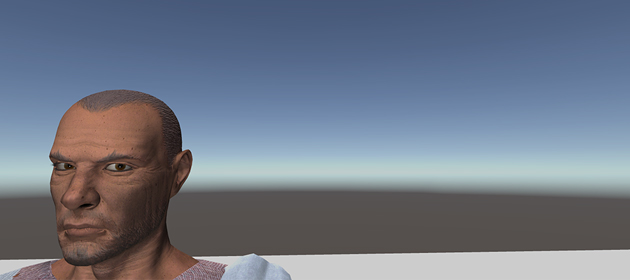
"To bring to life, to inspire.”
That’s how the Romans defined their word “animare”, the root from where we get our word for “animation.” That is what animation should do for games. But it’s not so easy. Historically, two factors made it difficult to create good quality animation in games.First, until the present time, computers did not have enough processing power or memory for quality animation. At 24 images or "frames" for every one second, it takes a lot of memory to hold all those images. And then you’ll need the processing power to maintain that rate. Once it dips below 24 frames a second, you’ll notice the individual frames. This kept animation from achieving Disney/Pixar like quality. Games had little choice but to rely on fewer frames.
Second, the principles of good animation can sometimes conflict with principles of good game design. Take control away from the player in order to play animation enough times, you will eventually get a frustrated gamer. Nevertheless, game developers have strived to harness the emotional impact that comes from quality animation. From Jordan Mechner's Prince of Persia, Don Bluth's Dragon Lair to the present day with Naughty Dog’s Uncharted series, designers and players have relished in the great stories and acting told through animation.
In this respect, however, the first iteration of Saeculum was something akin to a vampire’s victim -- drained and lifeless. It was awkward to watch at times. I’m harsh only because the goal of Saeculum was to immerse students in the ancient city of Rome — to take part in her politics, history and conflict. But our awkward characters made immersion difficult:
Quintus Fulvius Flaccus doesn’t get out much
Taking a Step Back We met our deadlines, and even made a worthy educational game. But could it have been better? I recalled at the time a Shigeru Miyamoto’s quote:
“A delayed game is eventually good, but a rushed game is bad forever.”
We knew we could do better, but we had to take a hard, honest look to learn what we needed to do to really improve it. We knew the obvious problem: we had little knowledge of animation and we failed to prioritize for quality characters and animation.
We then set about to form a small but ambitious team, whose sole focus was to create quality characters and animation. We also set aside some time to enter into a period of research, development and training, where we learned about skin shaders, animation techniques, and character sculpting. I can’t stress it enough: give people the space to learn, fail and try again....just like games do!
Our Approach After a few months of R&D, we began laying the foundation for our character development pipeline. Since we are a small university based studio, we have to make sure every one of our resources count and that we can “scale” with a click of a button.
- Character Modelling We still use Mixamo’s Fuse to create our character models. The quality of Fuse’s character has grown extensively in the past year. In the previous iteration of Saeculum, we only used Fuse for insignificant characters, but, after extensive testing, we decided Fuse had both the ease of use and the quality that we desired for all of our characters. We still create small custom assets such as clothes, hair and accessories using ZBrush and Cinema4D, but Fuse let’s us create custom quality characters very quickly.
- Animation For animation, we continue to use some of Mixamo’s collection, but we now create a lot of animations for the game. Retargeting the animations using Mecanim in Unity enables us to maximize the return on all of our animations.
- Procedural Animation We still do not have the resources to create the amount of animations necessary, so we take advantage of a number of procedural animations techniques. All of the head and eye movements and several of the arm movements are procedurally generated. We also developed a modular facial expression system, so we can mix, match and blend facial expressions across all of our characters. Furthermore, we use a system that scans the wavelengths of the voice actor audio files to generate lip movements. It is not perfect lip syncing, but it is surprisingly effective.
Putting It All Together What is the result of this work? Let’s take a look.
Here is our new model for Quintus Fulvius Flaccus. He is much better looking than before, but let’s add some of our new features. The Unity 5’s Standard Shader, although much improved in other respects, still doesn’t render human skin very well.
Adding the human skin shader from the UnityTech Lab Demo adds a world of difference. We also some new eye models and eye shader. Already there is a massive improvement.
But nothing says uncanny valley like a stiff head and face. Adding our new IK head and eye rig, we can our characters look at any point in space. We can also add and blend facial expressions.
Here you can see the old and new side by side.
There is still a lot of work to be done, but we’ve managed to create a great team and to build a solid foundation to lean on. With luck, perhaps we will manage to bring Saeculum to life.

